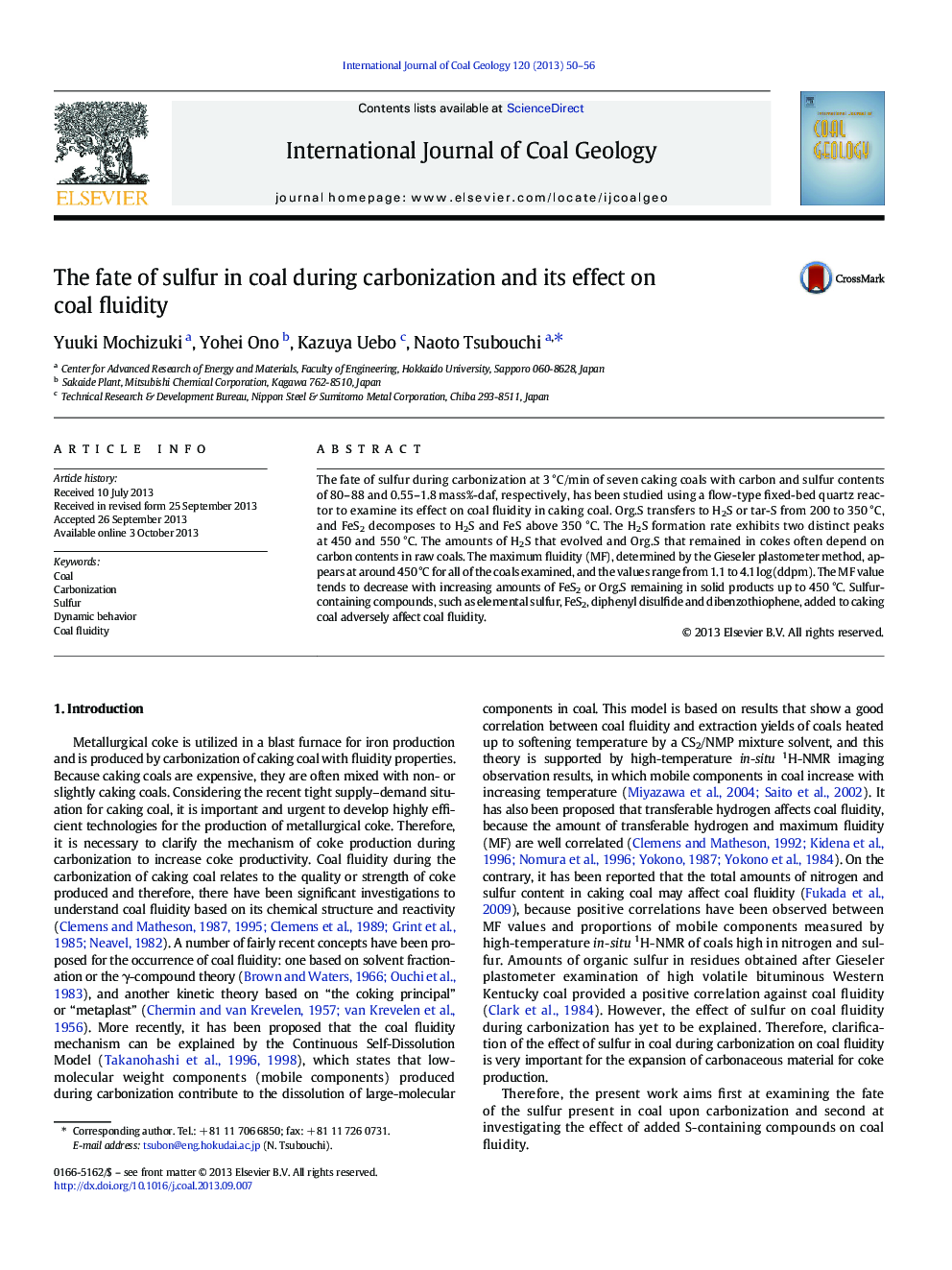| Article ID | Journal | Published Year | Pages | File Type |
|---|---|---|---|---|
| 8124045 | International Journal of Coal Geology | 2013 | 7 Pages |
Abstract
The fate of sulfur during carbonization at 3 °C/min of seven caking coals with carbon and sulfur contents of 80-88 and 0.55-1.8 mass%-daf, respectively, has been studied using a flow-type fixed-bed quartz reactor to examine its effect on coal fluidity in caking coal. Org.S transfers to H2S or tar-S from 200 to 350 °C, and FeS2 decomposes to H2S and FeS above 350 °C. The H2S formation rate exhibits two distinct peaks at 450 and 550 °C. The amounts of H2S that evolved and Org.S that remained in cokes often depend on carbon contents in raw coals. The maximum fluidity (MF), determined by the Gieseler plastometer method, appears at around 450 °C for all of the coals examined, and the values range from 1.1 to 4.1 log(ddpm). The MF value tends to decrease with increasing amounts of FeS2 or Org.S remaining in solid products up to 450 °C. Sulfur-containing compounds, such as elemental sulfur, FeS2, diphenyl disulfide and dibenzothiophene, added to caking coal adversely affect coal fluidity.
Related Topics
Physical Sciences and Engineering
Earth and Planetary Sciences
Economic Geology
Authors
Yuuki Mochizuki, Yohei Ono, Kazuya Uebo, Naoto Tsubouchi,
